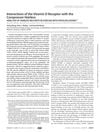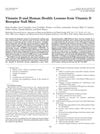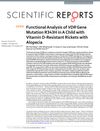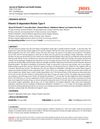Hereditary Vitamin D-Resistant Rickets (HVDRR) Owing to a Heterozygous Mutation in the Vitamin D Receptor
August 2011
in “
Journal of Bone and Mineral Research
”
TLDR A girl had rickets due to a gene mutation affecting vitamin D response.
Hereditary vitamin D-resistant rickets (HVDRR) was identified in a young girl with a heterozygous missense mutation in the vitamin D receptor (VDR) gene, specifically substituting glutamic acid with alanine at amino acid 420 (E420A). This mutation led to clinical features of rickets and hypocalcemia, despite elevated serum 1,25-dihydroxyvitamin D levels. The girl's father, also carrying the mutation, showed minor symptoms, while the mother was unaffected. The E420A mutation exhibited dominant-negative activity, impairing the function of the wild-type VDR and reducing the response to 1,25(OH)2D3. This case was the first reported instance of HVDRR caused by a single heterozygous mutation in the VDR gene.





